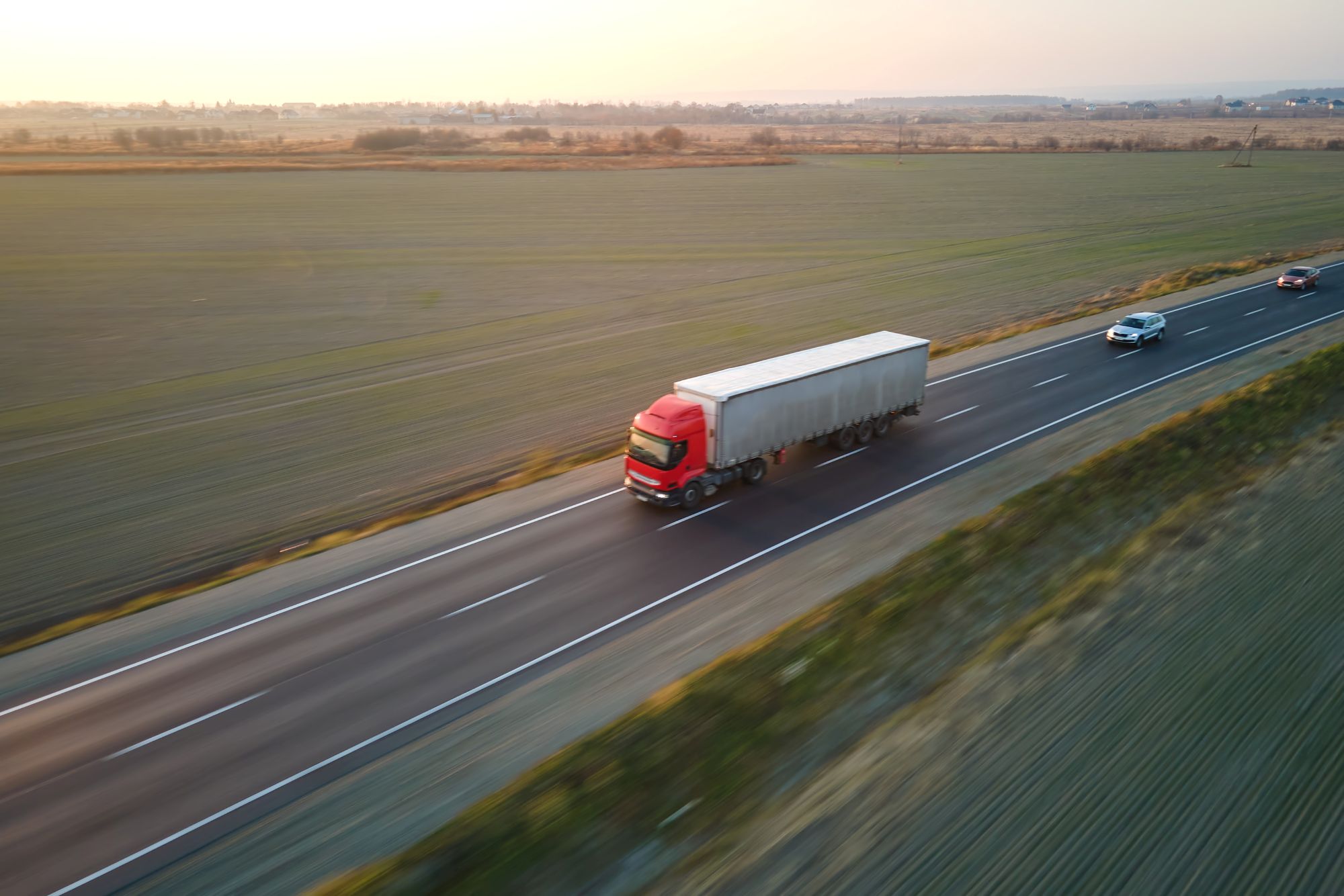
Susie Jones
Laufende Straßenverkehrsprojekte in ganz Europa
Erstellt: 12.03.2025
•
Aktualisiert: 12.03.2025
Im Jahr 2023 werden [83,4 %] (https://ec.europa.eu/eurostat/statistics-explained/index.php?title=Roadfreighttransport_statistics) des EU-Straßenverkehrs in Tonnenkilometern von Lastkraftwagen mit einem zulässigen Gesamtgewicht von über 30 Tonnen abgewickelt.
Die Straßenverkehrsbranche in Europa befindet sich in einem tiefgreifenden Wandel, der durch technologische Fortschritte und Nachhaltigkeitsziele vorangetrieben wird. Für das Transportgewerbe könnten diese Veränderungen entscheidend sein, um in einer sich schnell entwickelnden Branche wettbewerbsfähig zu bleiben. Wir werden einige der Änderungen, die in diesem Jahr in Kraft treten, und künftige Fortschritte untersuchen.
Straßeninfrastrukturbauprojekte.
Ausbau der Autobahn A-7 von Crevillente nach Alhama de Murcia
Die Bauarbeiten für die Autobahn zwischen Crevillente und Alhama in Murcia begannen im 4. Quartal 2024, und die Fertigstellung wird für das Jahr 2030 erwartet. Mit dem Projekt wird eine hochmoderne Straßenverkehrsinfrastruktur geschaffen, die das Serviceniveau und den Fernverkehr zwischen den beiden Gebieten verbessert.
Vorteile für das Speditionsgewerbe:
Verbesserter Verkehrsfluss, weniger Staus und kürzere Fahrzeiten. Flottenmanager profitieren von niedrigeren Kraftstoff- und Wartungskosten und einer verbesserten logistischen Effizienz.
Autobahn D11: Trutnov bis zur polnischen Grenze
Dieses Projekt, das im 4. Quartal 2024 in Angriff genommen wird, umfasst eine 21,17 km lange vierspurige Autobahn von Trutnov bis zur polnischen Grenze in der Region Hradec Kralove. Das Projekt ist Teil der Autobahn D11, die Praha, Hradec, Králové und Trutnov mit dem polnischen Grenzübergang verbindet.
Vorteile für das Speditionsgewerbe:
Bessere grenzüberschreitende Anbindung, kürzere Reisezeiten und weniger Staus. Eine vierspurige Autobahn senkt die Kraftstoffkosten, erhöht die Verkehrssicherheit und bietet eine zuverlässige und schnellere Strecke.
A5-Tunnel
Der A5-Tunnel in Madrid, der 2027 fertiggestellt werden soll, soll die Verkehrsüberlastung verringern und den Menschen in der Region eine moderne Verkehrsinfrastruktur bieten. Das Projekt wird die Luftqualität, die Lärmbelastung und die Mobilität verbessern.
Vorteile für das Speditionsgewerbe:
Verbesserung des Verkehrsflusses, Verringerung von Staus und eine schnellere, zuverlässigere Route für den Güterverkehr.
Prager Ringstraße: Abschnitt Bechovice - Autobahn D1
Zwischen Bechovice und der Autobahn D1 in Prag werden 12,6 km Straße sechsspurig ausgebaut - Fertigstellung im 4. Quartal 2027. Dieses Projekt ist einer der verbleibenden Abschnitte, die die Prager Ringstraße vervollständigen würden.
Vorteile für das Speditionsgewerbe:
Reibungslosere und schnellere Bewegung von Frachtfahrzeugen - Steigerung der Transporteffizienz.
A47 North Tuddenham to Easton Dualling
Zwischen North Tuddenham und Easton in Norfolk, Großbritannien, ist der Ausbau der 9 km langen einspurigen Autobahn A47 zu einer zweispurigen Autobahn geplant. Die Fertigstellung ist für das 4. Quartal 2026 geplant.
Vorteile für das Speditionsgewerbe:
Die Umleitung dieses Abschnitts wird zu einem gleichmäßigeren Verkehr führen, wodurch Verspätungen minimiert und Kraftstoffkosten gesenkt werden.

Technologische Veränderungen.
Elektrische Ladeinfrastruktur
Bis zum Jahr 2030 soll der Markt für Elektro-Lkw in Europa auf [15 %] (https://milence.com/insight/electrification-trends-in-2025/) anwachsen, was die Bedeutung des Ausbaus und der Umstellung auf nachhaltigen Verkehr unterstreicht. Es wird erwartet, dass 15 Milliarden Euro in die Ladeinfrastruktur für Elektro-Lkw in Europa investiert werden.
[Truckpark 2049] (https://snapacc.com/truckpark-2049/) untersucht, wo die Branche in Bezug auf die für das Aufladen von Elektrofahrzeugen an Lkw-Haltestellen erforderliche Infrastruktur stehen wird. Elektrofahrzeuge werden bis 2049 weltweit allgegenwärtig sein - Flotten werden die unmittelbaren finanziellen Vorteile bemerken und die Früchte eines effizienten Fahrzeugmanagements ernten.
Drohne in Italien zur Verkehrsüberwachung
Italien hat Drohnen zur Überwachung des Straßenverkehrs, zur Schalldämmung von Bildschirmen und Zäunen sowie zur Erkennung von Staus, stehenden Fahrzeugen und anderen Hindernissen eingeführt. Die Drohnen steigen bis auf 120 Meter auf und decken beide Richtungen der Autobahn A35 ab. Die Aufzeichnungen werden an das Kontrollzentrum gesendet, was das Interventionsmanagement verbessert und eine schnelle Reaktion auf Probleme auf der Strecke ermöglicht.
Das Drohnenprojekt zur Bestands- und Verkehrsüberwachung besteht aus drei operativen Phasen:
Erste Phase: In dieser Phase, die im Oktober 2024 beginnt, werden Drohnentests unter der Leitung von Spezialisten durchgeführt und eine Plattform für die Verwaltung der Echtzeit-Videoübertragung im Kontrollzentrum von Brebemi eingerichtet.
Stufe zwei: Einführung der Fernsteuerung von Drohnen über das Kontrollzentrum, das mit Hilfe fortschrittlicher Sensoren Daten und Bilder übermittelt.
Dritte Stufe: In der jetzigen Phase werden die Drohnen völlig autonom arbeiten.
Kostenlose Autobahnen in Spanien ab 2029
Das Ministerium für Verkehr und nachhaltige Mobilität hat angekündigt, die Möglichkeit zu prüfen, drei wichtige Autobahnen - AP-6, AP-51 und AP-61 - so anzupassen, dass sie nach Ablauf des Abkommens im November 2029 ohne Mautgebühren betrieben werden können. Nach diesem Zeitpunkt werden diese Straßen vom Ministerium verwaltet und können gebührenfrei genutzt werden.
Welches europäische Land hat die beste Straßeninfrastruktur?
Eine Umfrage hat ergeben, dass Westeuropa über eine bessere Straßeninfrastruktur verfügt als Osteuropa, wo die Qualität der Straßen in den Ländern insgesamt ein schlechtes Bild bietet.
Die Niederlande belegten den ersten Platz bei der Straßenqualität in Europa, gefolgt von der Schweiz, Österreich, Portugal, Spanien und Kroatien.



